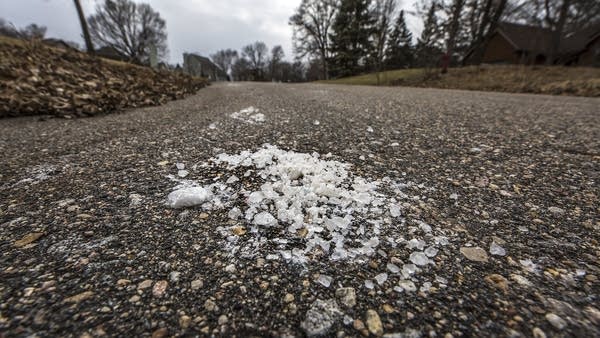4 earth-friendly tips to clean up your icy sidewalk

Go Deeper.
Create an account or log in to save stories.
Like this?
Thanks for liking this story! We have added it to a list of your favorite stories.
The salt we're so inclined to dump on roads and sidewalks after winter storms is a growing threat to Minnesota's lakes and streams.
Chloride — the mineral in salt that's toxic to fish, birds and other aquatic life — is now considered an impairment in 50 bodies of water across the state. Scientists only expect that number to rise.
While large-scale salt application is the biggest culprit, there are some things individuals can do to minimize their impact:
1) Break out the shovel. If you're going to use salt, first clear off as much snow and ice as you can with a shovel or scraper. Manual removal is more effective, and it's cheaper.
2) Don't dump. A little salt goes a long way. Spread it out. According to Clean Water Minnesota, "a 12-ounce coffee cup of salt is enough to cover 10 sidewalk squares or a 20-foot driveway."
3) Check the temperature. If it's below 15 degrees, it's too cold for salt to effectively melt ice. Consider using sand instead. It won't melt the ice, but it will increase traction. Plus, sand is easier on your pet's paws.
4) Sweep up excess salt. It'll end up as runoff into waterways or the soil. Clean Water Minnesota recommends sweeping up whatever salt is left sitting on the pavement so you can reuse it after the next storm.
Turn Up Your Support
MPR News helps you turn down the noise and build shared understanding. Turn up your support for this public resource and keep trusted journalism accessible to all.


